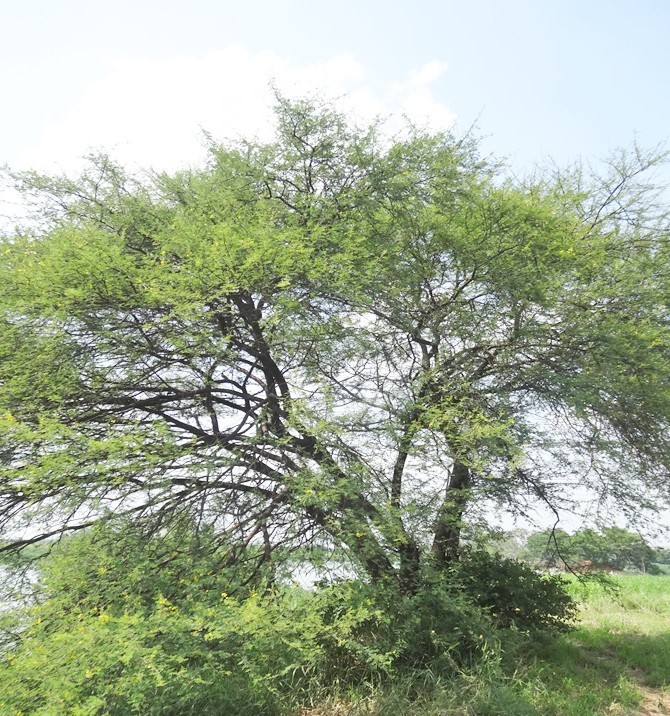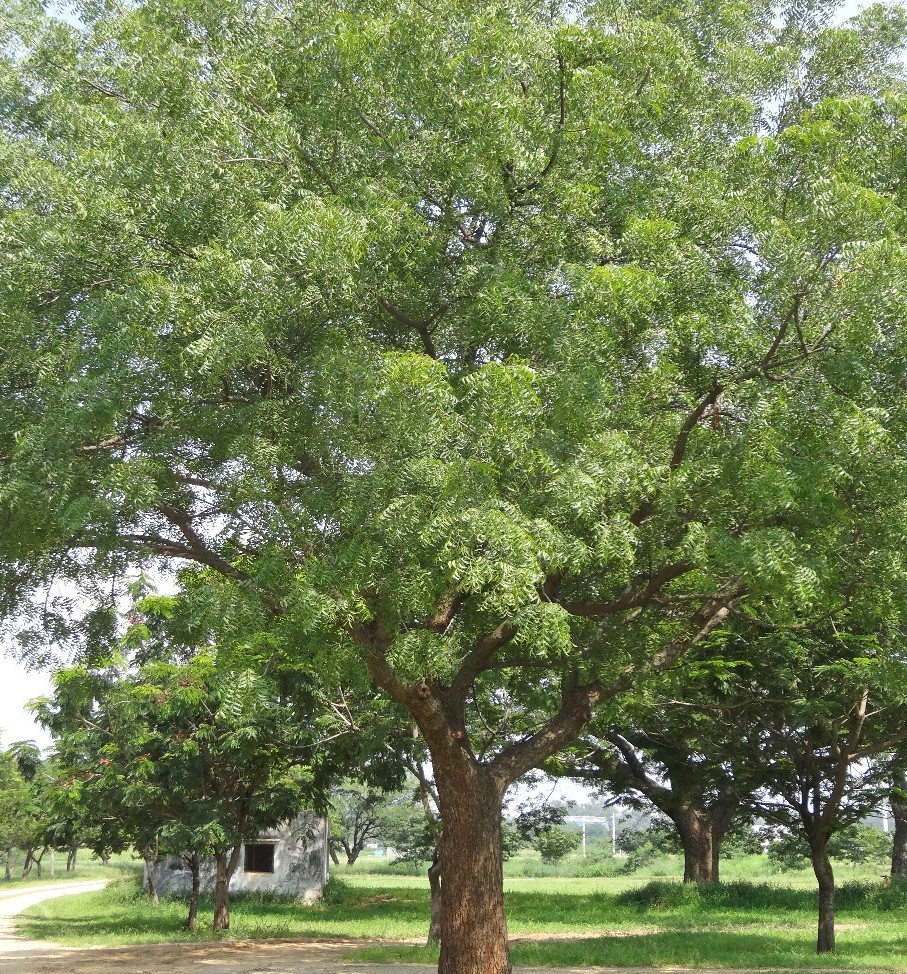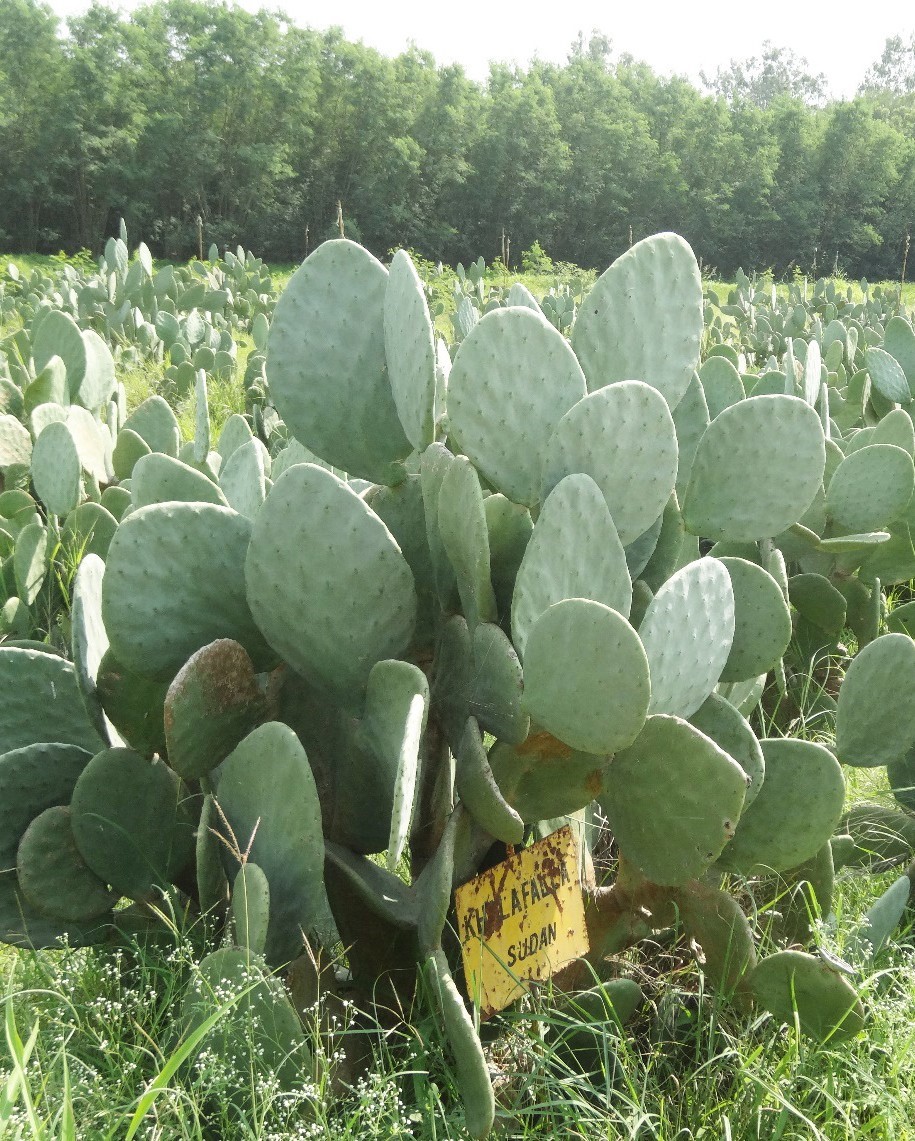Acacia (Babul)

Acacia (Babul)
| Scientific name | Acacia nilotica |
|---|---|
| Other names | Thorny acacia, Arabica gum tree |
| Important features | This is a medium sized, thorny, nearly evergreen tree and useful fodder source in dry regions in periods of scarcity. It may remain a shrub under poor growing conditions. Its leaves and pods are used at different periods by different types of animals. These trees are highly suitable in agroforestry systems. The crude protein content of the leaves is 14-20% and for the highly palatable pods 11-16%. While the pods and shoots comprise the chief diet of goats and sheep, its seeds are a valuable cattle feed. |
| When and How To Plant | It propagates by seeds carried in animal droppings or by direct seeding. Planting can also be done at 5 m distance on bunds and farms at of 4-6 kg seed/ha. For good germination, soak the seeds in water 48 hours before planting. |
| Chemical fertilizer (kg/ha) | 50 kg P and 25 kg K as a basal dose. |
| Farm Yard Manure (tons/ha) | 2-3 t as spot application. |
| Green fodder yield (tons/ha) | The trees bear fruits within 4-6 years and yield about 15-18 kg pods/year. The yield of leaves varies from 0.2-2.0 t/ha/ year. |
Melia Azadirachta

Melia Azadirachta
| Scientific name | Melia Azadirachta (Melia azedarach) L. |
|---|---|
| Other names | Bead tree, Pride of India, Maha neem |
| Important features | Melia is a highly adaptable tree native to India, the leaves of which are lopped for fodder and are highly nutritious. It is a fast-growing, deciduous tree that can reach a height of around 10-45 m. It grows well in most well-drained soils and in hot dry conditions and tolerates quite poor growing conditions, including shallow soils, saline, alkaline soils etc. The crude protein and crude fiber content of the aerial part is 14-20% and 12-14% respectively. |
| When and How To Plant | Planting can be done at 5 m distance on bunds and farms at 3-5 kg seed/ha. |
| Chemical fertilizer (kg/ha) | 20 kg N:40 kg P: 20 kg K applied in spots. |
| Farm Yard Manure (tons/ha) | 1-2 t as spot application. |
| Green fodder yield (tons/ha) | Trees commence flowering when 5-6 years old. A mature tree can produce about 300-500 kg of leaves annually. |
Spineless Cactus

Spineless Cactus
| Scientific name | Opuntia ficus-indica |
|---|---|
| Important features | Commonly known as prickly pear, it survives and propagates well in arid and semi-arid regions of India, in severely degraded soils and under severe dry conditions. It is characterized by better water use efficiency (267 kg of water/kg dry matter) and rain use efficiency (40 kg DM/mm/year) than any other conventional fodder crops. Parts of the plant can be used as fruit and vegetable for human consumption, as fodder for livestock, and as raw material for various industries. The nutritive quality of cacti cladodes depends on plant type (species, varieties), cladode age, season, and agronomic conditions (soil type, climate, and growing conditions). Since cladodes are an unbalanced feed nutrient-wise, diets containing cactus should be balanced with appropriate supplements. It is composed of nearly 90% water on a fresh weight basis, 5-12% of crude protein, and about 10% fiber of dry weight. Since the plants contain a high percentage of water (up to 95% when fresh), when fed to livestock their water needs can be reduced by 40-100%. While cattle may consume 50-70 kg fresh cladodes/day, goat and sheep have 6-8 kg/day. The energy content of cladodes is about 3,500 to 4,000 kcal/ kg dry matter, just over half of which is digestible, coming mainly from carbohydrates. |
| When and How To Plant | It is mainly propagated by cuttings or grafting in the postrainy season from October to March. Remove one-year- old fresh mature cladodes from the mother plant and cure them under the shade for 15 days before planting. A temperature ranging from 18–30°C is suggested for regeneration and soil temperature of around 22°C for best root growth. |
| Chemical fertilizer (kg/ha) | 60 kg N:30 kg P:30 kg K at planting. Application of 20 kg N enhances new sprouts after every harvest for biomass. |
| Farm Yard Manure (tons/ha) | 5-6 t. |
| Irrigation | Mostly rainfed. |
| Green fodder yield (tons/ha) | Mature cladodes may be harvested when one year old. Biomass yield is about 15-20 kg/plant and 80-100 t/ha of cladodes. Biomass yield increases in subsequent years. Freshly harvested thornless cladodes may be fed to goat/ sheep/cattle as a 30% replacement for other green fodder. |

